books 10 Fascinating Facts About Jack Kerouac - Mental Floss
books 10 Fascinating Facts About Jack Kerouac - Mental Floss |
- books 10 Fascinating Facts About Jack Kerouac - Mental Floss
- Exclusive Cover Reveals For The 'Faraway' Collection - The Nerd Daily
- They look like ordinary California news websites. Their backers: Conservative operatives - Sacramento Bee
- Six books to keep you up at night - Pacific Northwest Inlander
| books 10 Fascinating Facts About Jack Kerouac - Mental Floss Posted: 29 Oct 2020 10:14 AM PDT  Around midnight one September evening in 1957, Jack Kerouac and his girlfriend, Joyce Glassman, went to the local newsstand. They were looking for the morning issue of The New York Times and its review of Kerouac's new book, On the Road. There it was, on page 27: a rave review by critic Gilbert Millstein, who declared that "Its publication is a historical occasion." That one review changed Kerouac's life, making him the most famous Beat Generation member and allowing him to publish numerous novels—many of which would draw from his own life. 1. Jack Kerouac's childhood nickname was "Memory Babe."Jean-Louis Lebris de Kerouac was born on March 12, 1922 in Lowell, Massachusetts. His father, Leo, was an insurance salesman and later owned a print shop; his mother, Gabrielle, was a homemaker. French, not English, was his first language, and throughout his life, he felt a cultural estrangement as a French-speaker in the United States. As a child, Kerouac had an astounding memory: He could accurately remember scenes and conversations from the past, which caused his friends to call him "Memory Babe." He would use this talent in his novel The Town and the City to describe the typical New England family life. According to biographer Ann Charters, since his boyhood life wasn't as idyllic as the story required, he combined elements of his own childhood alongside memories of his friends' lives. 2. A friend inspired Jack Kerouac to be a writer.After skipping the sixth grade, Kerouac attended Bartlett Junior High School, where he met Sebastian Sampas. The two shared a love of theater and literature and formed a deep friendship. Thanks to Sampas's influence, Kerouac joined the school's Scribbler's Club. In his Lonesome Traveler, published in 1960, Kerouac wrote, "Decided to become a writer at age 17 under influence of Sebastian Sampas, local young poet who later died at Anzio beach head" in World War II. Kerouac married Sampas's sister, Stella, in 1966. 3. Jack Kerouac's poems were influenced by a Japanese poet.Seventeenth-century Japanese poet Matsuo Bashō used Buddhist themes like nature, enlightenment, and the cycle of life, along with plain language, when writing haiku poems. Kerouac loved haiku, writing copious amounts of it and incorporating it into his novels—though he disregarded the syllable count many associate with the form, saying instead that "Pop———American (non-Japanese) Haikus" were "short 3-line poems, or 'pomes,' rhyming or non-rhyming, delineating 'little Samadhis' if possible, usually of a Buddhist connotation, aiming towards enlightenment." A sample of his Bashō-inspired work:
As the author's friend, Beat poet Allen Ginsberg, would say, "He's the only one in the United States who knows how to write haiku… [he] talks that way, thinks that way." 4. Jack Kerouac got married to escape jail.In 1944, future Beat writer Lucien Carr murdered his friend David Kammerer. Carr claimed that Kammerer was gay and had been stalking him; Carr also said that Kammerer was continuously making advances at him, even though Carr turned him down. Carr claimed that, to protect himself, he had stabbed Kammerer to death with his Boy Scout knife. (This type of excuse for murder would later come to be known as the "gay panic defense.") After filling Kammerer's pockets with rocks, Carr dumped his body into the Hudson River. He then went to see his friends Jack Kerouac and William Burroughs; Carr said he and Kerouac went to a nearby park to dispose of the evidence. Later, Kerouac was arrested and jailed as a material witness to the crime. Kerouac couldn't post bail, so he asked his girlfriend, Edie Parker, to borrow the money from her parents. Edie, however, wouldn't do it unless he promised to marry her, which he did. Kerouac also said they would move to Grosse Pointe, Michigan, where he'd get a job to repay the loan. On August 22, Kerouac married Edie Parker and was soon released. He made good on his promises, but their marriage would soon go downhill and was eventually annulled. Kerouac later referenced Kammerer's murder in his autobiographical novel Vanity of Duluoz, writing that he had told the character based on Kammerer where the character based on Carr was going on the night of the murder and had watched "him rush off to his death." 5. Jack Kerouac didn't take care of his daughter.In late 1950, Kerouac married Joan Haverty, and in February 1952, Haverty gave birth to their daughter, Janet Michelle. But the couple separated before Janet was born, and Kerouac denied paternity, refusing to make child support payments. 6. Jack Kerouac and Gore Vidal slept together.Author Gore Vidal first met Kerouac in 1949 at the Metropolitan Opera, but beyond a little flirting, nothing happened. That would change in 1953, when Kerouac and Vidal met again at New York City's San Remo Cafe. Kerouac had intended to introduce Vidal to Burroughs, but Kerouac flirted relentlessly with Vidal, and Burroughs eventually left. After that, according to Vidal, he and Kerouac went to the nearby Chelsea Hotel, where they had sex. Later, Kerouac would write a fictionalized account of the encounter in The Subterraneans: "[He] is a well-known and perfectly obvious homosexual of the first water, my roaring brain---we go to his suite in some hotel--I wake up in the morning on the couch, filled with the horrible recognition, 'I didn't go back to Mardou's at all.'" 7. Alan Watts wasn't a fan of Jack Kerouac's interpretation of Buddhism.Kerouac published his novel The Dharma Bums, which portrayed his fictional alter ego learning Buddhism, in 1958. Kerouac's portrayal of Buddhism was popular among the youth of the day, but famous Zen teacher Alan Watts wasn't a fan. "Beat Zen is a complex phenomenon," Watts wrote. "It ranges from a use of Zen for justifying sheer caprice in art, literature, and life to a very forceful social criticism and 'digging of the universe' such as one may find in the poetry of Ginsberg and Snyder, and, rather unevenly, in Kerouac. But, as I know it, it is always a shade too self-conscious, too subjective, and too strident to have the flavor of Zen." Watts would publish his famous written work, Beat Zen, Square Zen, and Zen to distinguish between formal Zen and the Beat's style of Zen. To Watts, formal Zen was liberation from conventional thought, while the Beat's style of Zen was simply a revolt against culture or social order. 8. Jack Kerouac has been accused of anti-Semitism.When Kerouac sat down for an interview at New York's Northport Public Library in 1964, he talked about a wide range of subjects, among them his friend Allen Ginsberg, religion, and race relations. He also discussed his views of Jewish people. According to Paul Maher in Kerouac: The Definitive Biography, the author had a theory "that the strife over civil rights for African Americans was initiated by an 'invasion' of Russian Jews into America." Kerouac reportedly stated, "After they [Jewish people] had established themselves here, they then took the Negro out and flung him at America and hide behind his skirts so that we will forget about anti-Semitism because we're worried about Negroes now." These statements led to Kerouac being accused of anti-Semitism—which he vehemently denied. 9. Jack Kerouac liked to paint.Writing wasn't Kerouac's only talent: The author was also an artist. He drew his first self-portrait when he was 9, and created vast amounts of artwork—working in everything from pencil to oils to watercolors—as an adult. Like the characters in his novels, Kerouac often based his artworks on people he met. 10. Jack Kerouac was an influence on Hunter S. Thompson.As a 21-year-old, future Gonzo journalist Hunter S. Thompson did not have kind words for Kerouac or his work, writing in a letter that "The man is an ass, a mystic boob with intellectual myopia. The Dharma thing was quite as bad as The Subterraneans and they're both withered appendages to On The Road—which isn't even a novel in the first place." A few years later, Thompson called Kerouac's Big Sur a "stupid, sh**ty book." But his opinion seemed to have mellowed with age: In 1994, he reportedly said he "never would have become a writer were it not for On the Road," and acknowledged four years later that Kerouac "was a great influence on me." |
| Exclusive Cover Reveals For The 'Faraway' Collection - The Nerd Daily Posted: 29 Oct 2020 04:59 AM PDT We are thrilled to be revealing the covers for the latest Amazon Original Stories collection, Faraway (December 15, 2020), which sees bestselling authors Rainbow Rowell, Nic Stone, Soman Chainani, Ken Liu, and Gayle Forman take classic fairy tales out for a new spin. Classic fables take on new meaning as five of today's most original bestselling authors serve up some deliciously modern twists. New reflections on evil queens, charmless princes, and star-crossed lovers branch out in provocative and enchanting directions. Follow the path and see where it leads… Whether read or listened to in one sitting, prepare to be charmed, moved, enlightened, and frightened all over again. FARAWAY will be available in digital and audio formats, free to Prime members as well as Kindle Unlimited subscribers on December 15, 2020. Readers can download each story individually, or get the whole collection with just one click. Stories are also available for non-members for $1.99, with the option to add digital audio for free. Learn more about each story below! The Prince and the Troll by Rainbow Rowell A charming everyman and a mysterious something-under-the-bridge cross paths in a short fairy tale by the #1 New York Times bestselling author of Eleanor & Park and the Simon Snow series. It's fate when a man accidentally drops his phone off the bridge. It's fortune when it's retrieved by a friendly shape sloshing in the muck underneath. From that day forward, as they share a coffee every morning, an unlikely friendship blooms. Considering the reality for the man above, where life seems perfect, and that of the sharp-witted creature below, how forever after can a happy ending be?  Hazel and Gray by Nic Stone Two anxious young lovers lost in the woods. A beckoning mansion in a dark clearing. A short modern-day retelling of Hansel and Gretel by the #1 New York Times bestselling author of Dear Martin. It's bad enough that Hazel and Gray have defied the demands of Hazel's foul stepfather. The Monster has forbidden their romance. Now they've awakened in the forest, phones dead, hours past curfew. But not far away is a grand estate in the middle of nowhere. The door is open. In this short story about choosing your own path, the fury of the Monster that awaits them back home may be nothing compared to what lies ahead.  The Princess Game by Soman Chainani There are no happy endings for the Princesses of Chaminade High in this short, twisty tale of teenage murder games by the New York Times bestselling author of The School for Good and Evil series. The victims are the most popular girls in school, each murdered and arranged in a grim fairy-tale tableau. To find the killer, rookie detective Callum Pederson has gone undercover where the Princes hold court. He's found enough secrets among the bros to bring them in for questioning—but he could very well get lost in the games the Princes play.  The Cleaners by Ken Liu Touch the past or wash it away? Two sisters have a choice in this unforgettable short story of everyday magic and the power of memory by the Hugo and Nebula Award–winning author Ken Liu. Gui is a professional cleaner at A Fresh Start, scrubbing away the unpleasant layers of memory that build up on the personal objects of his customers. Memory-blind himself, he can't feel those wounds. Clara can, and she prefers them irretrievable. Until her sister, Beatrice, ultrasensitive to memory, raises one that could change Clara's mind. For Gui, the past is gone. For Clara and Beatrice, deciding what to remember reaches to the heart of their shared history.  The Wickeds by Gayle Forman The reviled villainesses of Snow White, Cinderella, and Rapunzel team up to set the record straight in a subversively funny short story by the #1 New York Times bestselling author of If I Stay. Envious queen? Evil stepmother? Kidnapping hag? Elsinora, Gwendolyn, and Marguerite are through with warts-and-all tabloids, ugly lies, and the three ungrateful brats who pitted them against each other and the world. But maybe there's more to the stories than even the Wickeds know. Is it time to finally get revenge? After all, they're due for a happily-enough-ever-after. Even if they have to write it themselves. Will you be checking out the Faraway collection? Tell us in the comments below! |
| Posted: 29 Oct 2020 05:00 AM PDT [unable to retrieve full-text content]They look like ordinary California news websites. Their backers: Conservative operatives Sacramento Bee |
| Six books to keep you up at night - Pacific Northwest Inlander Posted: 29 Oct 2020 01:34 AM PDT For someone with an anxiety disorder, I read a lot of horror. I always have. Predictably, my obsession started with Stephen King. I carried around a frayed paperback copy of The Stand until its cover was torn. In every class in middle school, I finished my work early so I could get to the next chapter of Bag of Bones, or finally find out what happened to Paul Sheldon in Misery. Whatever was in them — murderous ex-nurses, ghosts rearranging magnetic letters on the fridge, a species-annihilating new strain of flu — couldn't scare me, because I was already terrified. I was terrified all the time. I had phobias and night terrors and regularly woke up my family in the early hours of the morning, screaming and not knowing why. In retrospect, maybe I should have stopped. But as an anxious kid, horror was the only thing that didn't lie to me. Other books told me the world was a song and dance of bright colors and costumes. Horror told the truth, no matter how gruesome. The truth: The world is horrifying. People you love will disappear. People you don't love will find bizarre ways to hurt you, and sometimes they will succeed. You will make terrible mistakes. You will not always be forgiven. Because I trusted its honesty, I also trusted the other things horror told me. Like: I could be brave and resourceful and stronger than I looked. Monsters could, sometimes, be destroyed. Even at its most desperate and cruel, the world contained stories worthy of hearing. I learned to trust the small, defiant voice that sat in the back of my throat, the one that knew I was haunted, even if kind, well-meaning grownups couldn't see any ghosts. In turn, horror made clear my obligation to listen when someone said they were haunted even if their ghosts didn't touch me. Even if the people in power kept insisting those ghosts didn't exist. So, it's as a lifelong horror fan that I offer six books, some new and some old, to see you into the bone chill of Halloween season: 1. MEXICAN GOTHIC After receiving a weird letter from her newlywed cousin, Noemí Taboada travels to High Place to check on her. Towering over the Mexican countryside, High Place is a house of rusted silver, nightmares, and silence. Her cousin's family insists everything is fine. If she wants to figure out the truth, Noemí will need to find a way around the labyrinth of the home's oppressive rules and secrets, and she needs to work quickly; every inch of the family's history she uncovers makes it harder to find the way out. Moreno-Garcia reimagines classic Gothic forms with precision and deadly poetic grace. 2. THE QUAKER CITY or THE MONKS OF MONK HALL Quaker City is set in a mysterious, Philadelphia mansion nicknamed Monk Hall. Monk Hall's patrons are respectable gentlemen in the daytime. At night, they slither through the various floors of the hall, engaging in unspeakable crimes. Published serially, Quaker City was both immensely popular and incredibly controversial. Most importantly, it features the best dream sequence ever written, featuring a zombie proletariat uprising. 3. FRIDAY BLACK An unflinching interrogation of the layered, everyday terrors faced by Black Americans, this short story collection confronts systemic racism, capitalist accumulation and normalized violence through imaginative, heartstopping prose. Pieces like "The Hospital Where" and "Things My Mother Said" highlight the notes of tragedy underlying the fear, reminding us of what's at stake when our vulnerable bodies enter horror stories. Seriously, read this book. Order a few copies and start throwing them at anyone who looks too comfortable. 4. HAUNTING OF HILL HOUSE A handful of guests travel to an infamous mansion at the request of an eccentric researcher who wants to document a true supernatural experience. The narrative unfolds from the perspective of Eleanor Vance, a nervous woman who becomes increasingly wrapped up in the house. More than any other guest, the house speaks to Eleanor, and therefore, to us. Jackson is a master of psychological horror, and bends language to leave an unsettling shadow that doesn't lift after the last page. Plus, if you read Haunting of Hill House then you can shout at your TV when you see the abomination that is the end of the Netflix version. 5. HER BODY AND OTHER PARTIES Playfully experimental and sarcastic, her writing works across genres to mine and articulate the terrifying experiences of women. For instance, in "Real Women Have Bodies," a mysterious illness makes women disappear from the physical world. "Especially Heinous" explores sexual violence in the format of SVU episode descriptions. Read Her Body and Other Parties for the kind of horror that makes you cry, for lines like: "nothing makes pink taffeta pop like a dark void." 6. HOUSE OF LEAVES It's a bit hard to explain this book. The central story — if anything is truly at the center of this book — is about a couple who discovers their house measures impossibly larger on the inside than on the outside. Copious footnotes require paging forward and backward. For some lines, you need to rotate the book. For others, you need to solve a code. If you endeavor to read House of Leaves, a moment will come where you will sink to the floor, forgetting how to read, forgetting that you ever knew how to read, and wishing you could stop. But you won't. ♦ |
| You are subscribed to email updates from "famous short story,short stories for high school" - Google News. To stop receiving these emails, you may unsubscribe now. | Email delivery powered by Google |
| Google, 1600 Amphitheatre Parkway, Mountain View, CA 94043, United States | |
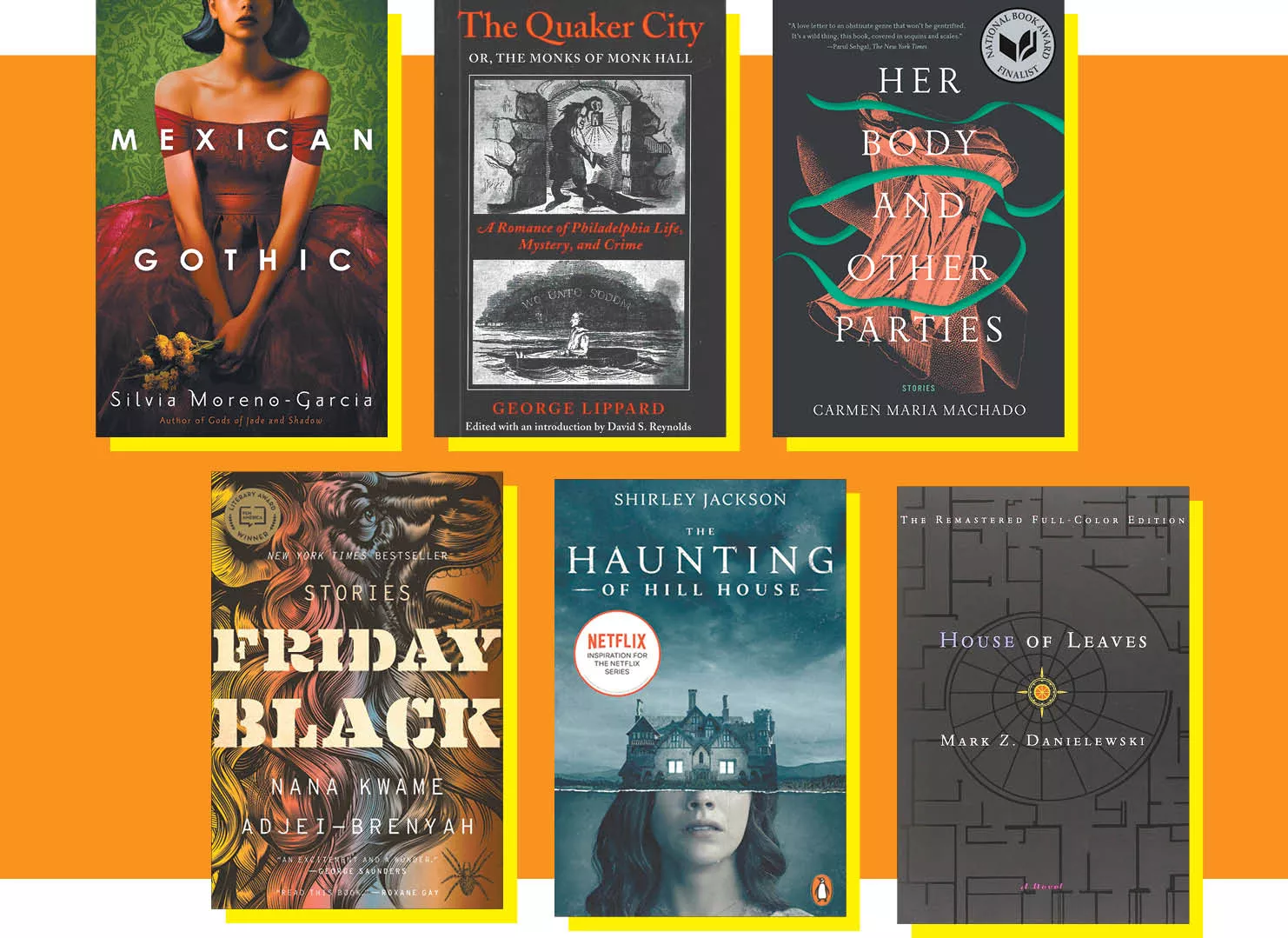
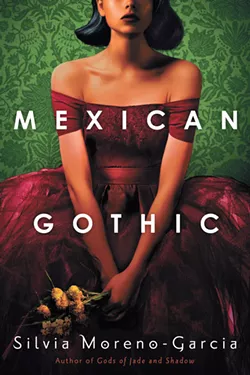
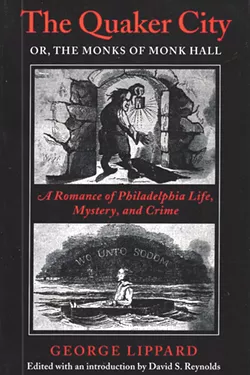
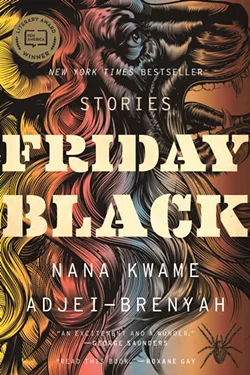
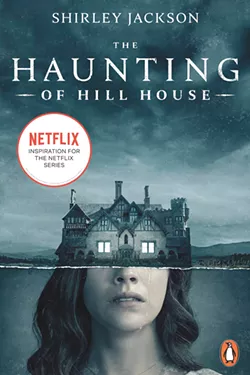
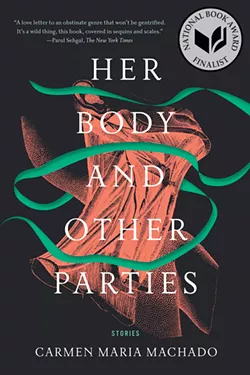
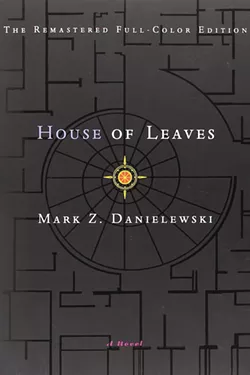



Comments
Post a Comment